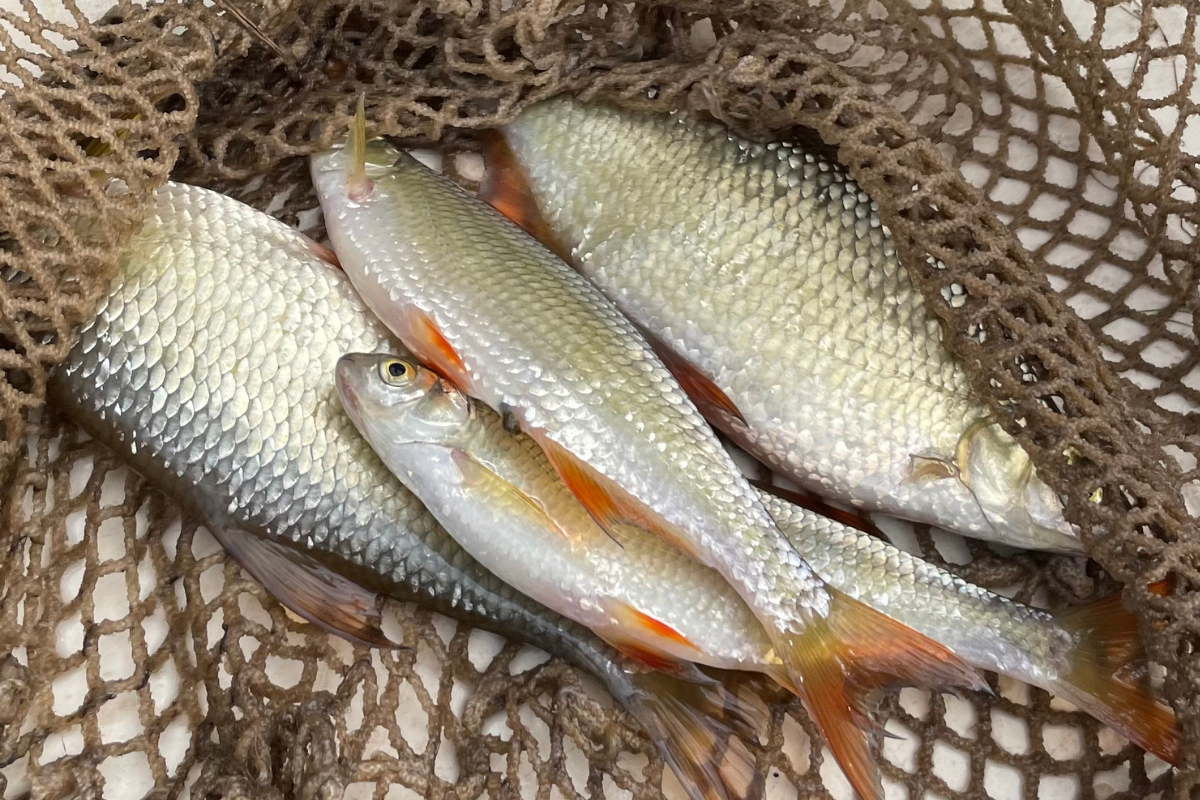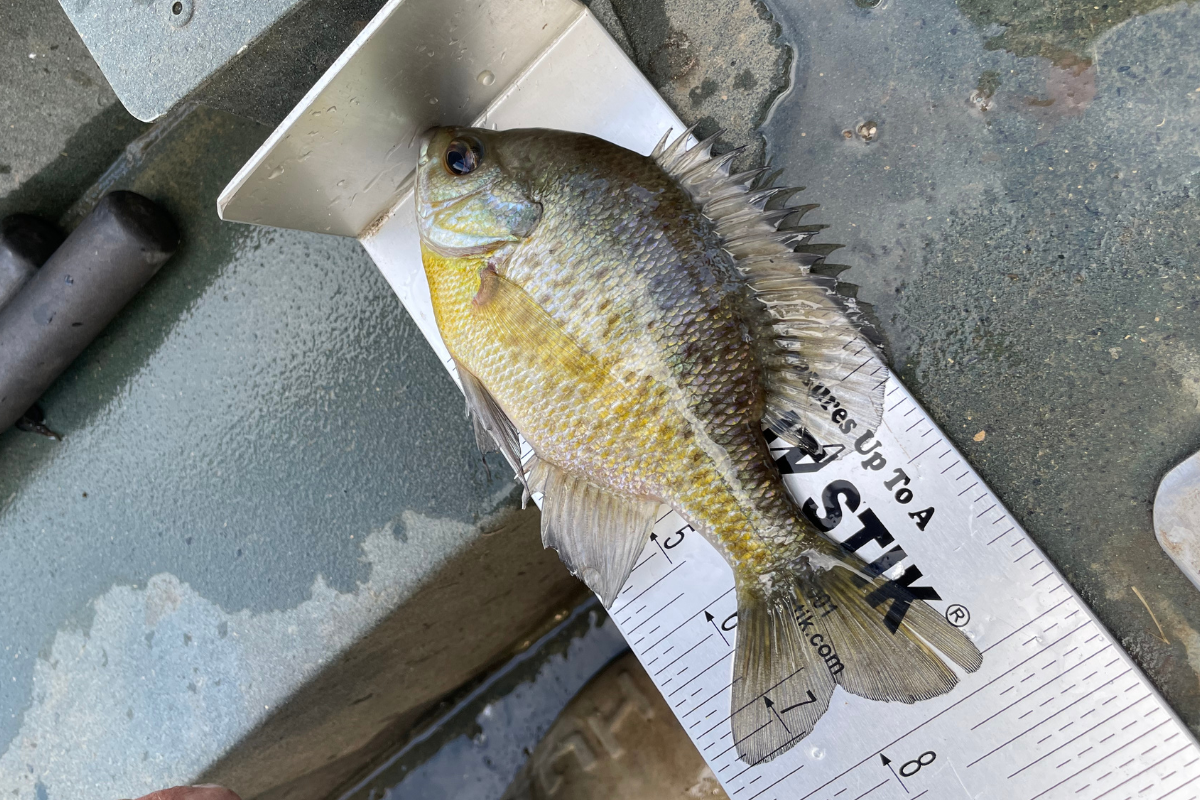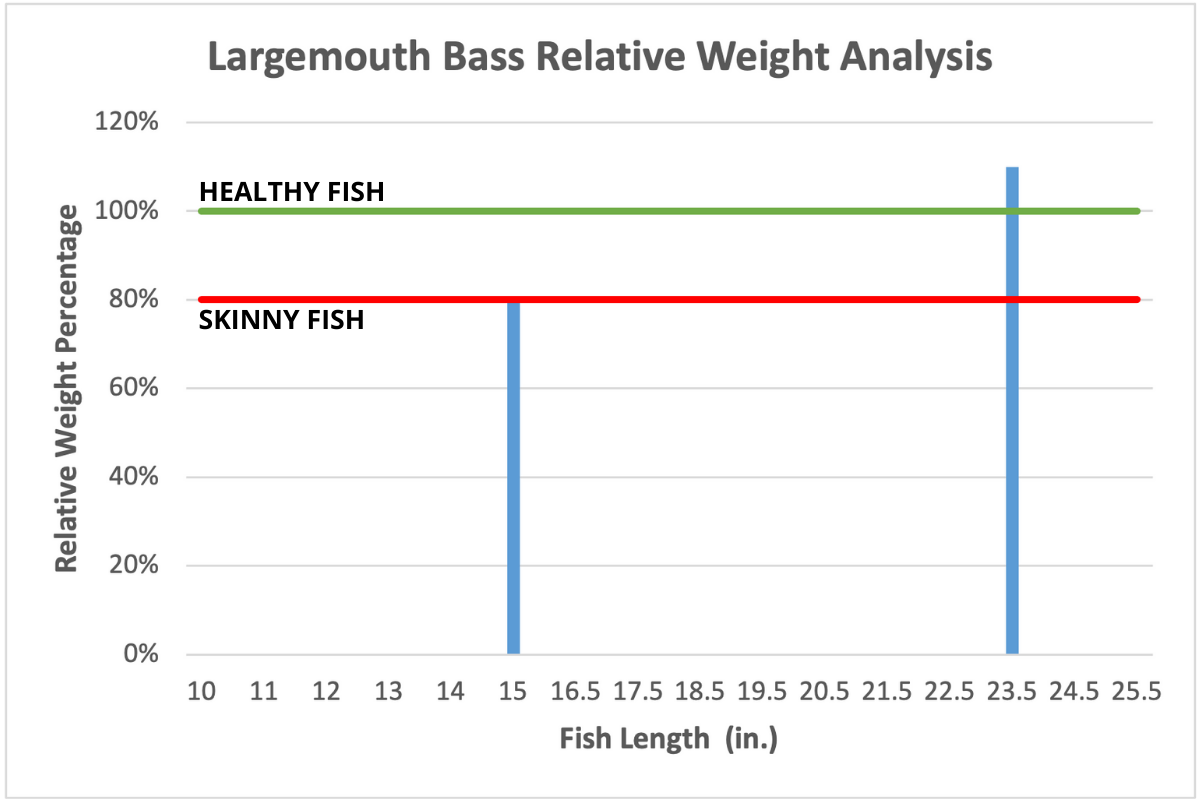Can you grow a trophy bass in a small backyard pond that’s only a couple acres or smaller? Of course you can! You don’t need a 20 acre pond to grow monster bass. If you have the right bass food in a pond, large or small, the bass will grow.
We recently performed an electrofishing population survey on a 0.6 acre backyard pond to assess the health of the predator and prey populations. We wanted to analyze the density of the bass and bluegill populations and check the distribution of fish amongst the different size classes present in the pond. We also wanted to look at the overall health of the fish to see if they were under or above the standard weight for their length.

Prime Bass Food!
We surveyed this pond for 30 minutes and found plenty of prime bass food to keep the bass in this pond big and healthy. The pond was loaded with bluegill and large golden shiners in the 8-9″ size class range. Although some pond owners think of shiners as a “trash” fish, these fish are the perfect forage for big bass. If you have a healthy population of shiners in a pond, you likely have some big bass in there as well!
The distribution of the bluegill population was slightly skewed to the larger end of the spectrum with many more fish in the 7-9″ size class range as opposed to the 3-7″ range. This suggests that there may be a lack of quality spawning habitat for the bluegill in the pond, and the small ones have a heavy predator pressure on them. As a result, we recommended adding more cover (of which this pond had little) to promote more successful spawning events in the bluegill population.

Skinny Bass or Healthy Bass?
Because this pond was so small, it was tough to get a good gauge on the health of the bass in the pond. We only caught five largemouth bass during our 30 minute electrofishing survey. We saw several more that we were unable to net because they disappeared into brush. Due to the size of the pond, electrofishing tends to just chase the fish after a couple circles around the pond. The fish see the boat coming and swim in another direction.
Three of the largemouth bass that we caught were under 8″ and we usually only look at relative weights for fish longer than 8″. For the two fish that were longer than 8″, one was right on the cusp of being too skinny and the other one was extremely healthy. The figure below shows the percentage relative weight for those two fish.
If the weight of a fish is below 80% of the standard weight, then it is considered skinny and unhealthy. If the weight of a given fish is close to or above 100% of the standard weight, this is a sign of a healthy, well-fed fish. We typically recommend culling fish that have a relative weight percentage below 80%. But because this pond was so small and the bass numbers were relatively low, we returned it in hopes that it would continue to grow.

Room for Improvement
Our general recommendations for this pond were to improve the health and size distribution of the bluegill population first and foremost. This can be done with a combination of sound pond management practices including adding a fish feeder, fertilizing the pond to promote plankton populations on which the bluegill feed, and providing more adequate spawning habitat and cover for the bluegill. Improving the bluegill populations will create even better bass food for the largemouth bass to continue to grow.
Due to the low relative numbers of largemouth bass that were caught during the survey, we also recommended stocking some bass in this pond. We believe that stocking approximately 15-20 6-8″ bass would be ideal to improve the bass population in this pond. And with the projected improvement in the bluegill population, there should be plenty of bass food to sustain more bass in the pond. Stocking larger fish will reduce mortality rates at stocking and ensure that the stocked fish are more likely to survive their first year in the pond.
Time for a Survey?
If you have a small or large pond in the south Georgia or North Florida area, we would be happy to help you determine how you can improve the quality of your fishery. You can complete this CONTACT FORM and one of our biologists will contact you to schedule a time to perform a population survey on your pond. After that survey is performed, we’ll follow up with a detailed report and recommendations for improving your fishery.
If you’d like to see a video of the electrofishing survey on this pond, click the thumbnail below. Don’t forget to SUBSCRIBE to our channel so that you’re notified each time we publish a new video.

